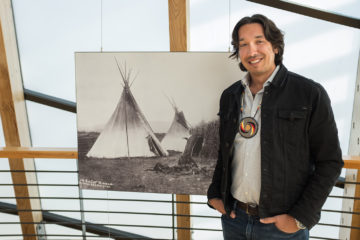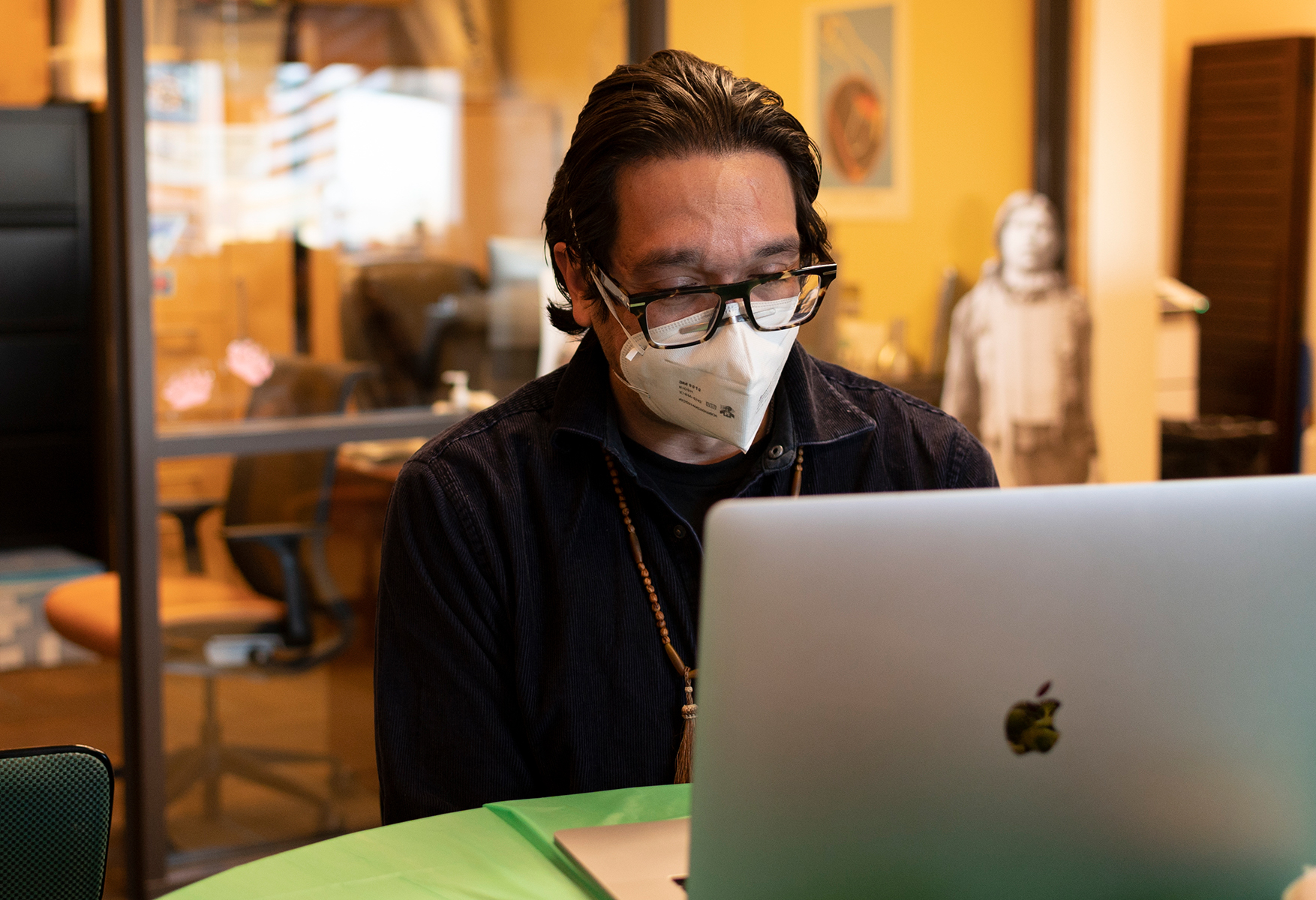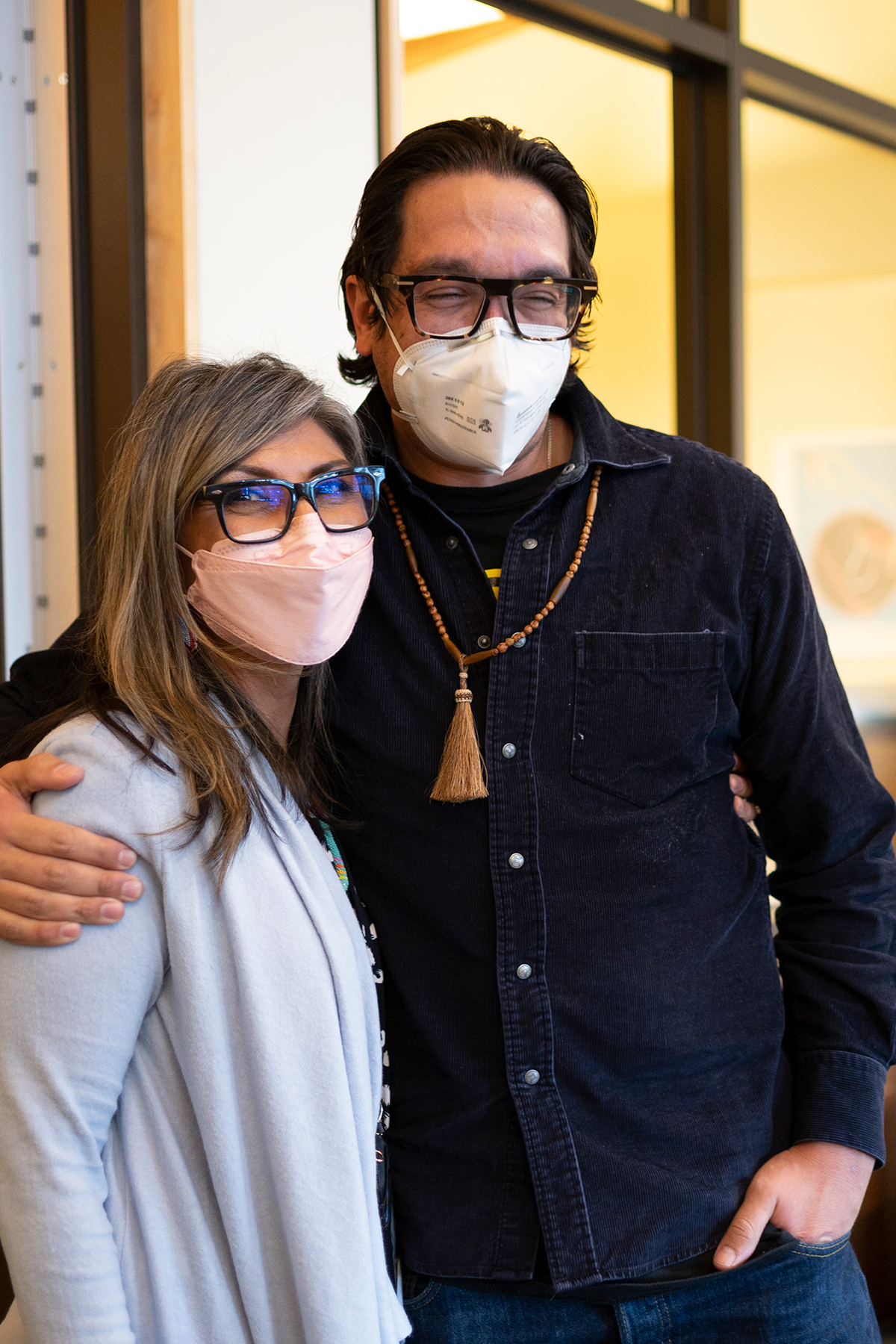Southern Ute tribal member Garrett W. Briggs was bid farewell during a virtual going away event held on Friday, Feb. 25. Briggs leaves his position as both Native American Graves Protection and Repatriation Act (NAGPRA) Coordinator and Tribal Historic Preservation Officer (THPO) with the Southern Ute Cultural Preservation Department. During the event fellow coworkers and close friends wished Briggs well on his future endeavors, also recognizing his work throughout the duration of his tenure with the department.
Briggs graduated with a Bachelor of Arts in Archaeology from the University of New Mexico, Albuquerque, N.M. as well as with a Master of Arts in Archaeology from Northern Arizona University, Flagstaff, Ariz. In May of 2017, Briggs became the NAGPRA Apprentice for the Southern Ute Cultural Department mentored by the late Southern Ute elder Alden Naranjo Jr. and worked alongside Cassandra Atencio. Briggs had the distinct role of being the male counterpart to Atencio, as culturally there are many things that a woman cannot be directly involved with during the reinterment process, a key role of the NAGPRA position.
“I will be involved in projects that strive to retrieve sacred objects from federally funded institutions and return them to our tribe, as well as work with federal agencies to protect our sacred landscapes, ancestral sites and natural resources that are vital to our lifeways,” Briggs said in an article first published by The Southern Ute Drum on May 25, 2017. “I am excited to be working with such high caliber and dedicated people in the cultural department, as well as serving my community.”
By Jan. 2020 Briggs had completed the term of the apprenticeship program, at the time Briggs was working under the supervision of former Cultural Dept. Director Edward Box III and acting Cultural Dept. Director Corliss Taylor, while also being mentored by the late Alden Naranjo Jr. and daughter Cassandra Atencio.
One-year earlier Briggs worked alongside Atencio and Naranjo, to complete the repatriation of an ancestor from the University of San Diego (USD). In January 2019, the Southern Ute Indian Tribe’s NAGPRA office entered consultation with USD and after filing an official repatriation request as well as a published Notice of Intent to Repatriate in the Federal Register the legal transfer of the ancestor from USD to the SUIT, which took place in October of 2019.
“The Southern Ute apprenticeship program provided me with an opportunity to achieve a personal and professional goal – to use my education obtained through the tribal scholarship program and serve our community,” stated Briggs. “While gaining practical experience, I was able to learn about culture, community, history, and language, for which I am eternally grateful. I will always cherish those moments and memories.”
In May of 2020, the Morris K. Udall & Stewart L. Udall Foundation and the Native Nations Institute for Leadership, Management, and Policy at the University of Arizona announced the selection of the 2020 Native American Congressional Interns. The program comprises 12 students representing 12 tribes and nine universities from around the country, interns were selected by an independent review committee based on academic achievement, leadership, and demonstrated commitment to careers in tribal public policy. Briggs became the first member of the Southern Ute Indian Tribe to be selected as a Udall intern.

Briggs, alongside NAGPRA employees throughout the years, have worked on many key projects. The two most memorable projects for Briggs relate to more recent history, these include the establishment of the Teller Institute Task Force and the Head Start Building Project. The Tribal Historic Preservation Office and Tribal Council co-wrote a letter inviting Colorado Department of Human Services (CDHS) to present at the December 2020 Colorado Commission of Indian Affairs meeting about the State’s intent to sell the old Grand Junction Indian School campus. This invitation emphasized the urgency to locate the student cemetery on school grounds prior to CDHS selling the land and as of 2022.
“Our office advocated for not only the involvement of the Southern Ute Indian Tribe, but our two sister tribes, and other tribes that are affiliated with the at least 21 students who are buried in Grand Junction, while the Indian boarding school operated from 1886 to 1911. That is significant because that is the first off reservation Indian boarding school in Colorado that was established. Our advocacy created the opportunity for Indigenous nations to be involved in the process, and which the state of Colorado neglected to do in the beginning,” Briggs said.
The Head Start Building Project was important to Briggs. THPO involvement with the school building began in February of 2018 and they were tasked with several directives by Tribal Council. After fulfilling these directives, “We nominated the Southern Ute Indian Boarding School Campus for listing on the Colorado’s Most Endangered Places (CMEP), which was listed in 2020. By being placed on CMEP’s list, it creates the opportunity for the Tribe to apply for different state funds, as well as potential federal funds to offset preservation efforts. Additionally, we were awarded the opportunity to collaboratively develop a mini documentary about the history of the Southern Ute Indian Boarding School, which involved interviews with past students, the late Alden Naranjo Jr., and Linda Baker who lived on campus while the majority of Indigenous students attended public school in the surrounding communities,” Briggs said.
Briggs also discussed his involvement in developing a system to manage records for not only historical reasons, but for research purposes as well, as one of his central projects with NAGPRA. Briggs acted along with many others to develop a system for managing historical documents. “I wanted to make sure there was a process in place that allowed us to protect our cultural resources moving forward in a manner that was directed through those with traditional knowledge, and how things should be treated or considered when they are in danger of being destroyed,” Briggs explained. “The program is known as Kwanachi, which means Golden Eagle in the Southern Ute dialect.”
“I’m going to be staying involved in whatever way I can, I’m not going to disappear, I’m not just going to vanish – I’m going to be present in whatever capacity I can be because I understand the importance of the work that the office is tasked with doing,” Briggs emphasized. “I want to make sure that I can uphold the lessons taught to me by the late Alden Naranjo Jr. and pass on the traditional and professional knowledge that I possess to Shelly Thompson and Xavier Watts. Alden always stressed, ‘to the best you can’ and that is what I am trying to do.”
“He was very dedicated and very passionate about the work that he does,” Southern Ute Cultural Preservation Director Shelly Thompson said. Adding that their department will continue with the projects set forward by Briggs, and work diligently to see them through to the end as a team.
Briggs will be missed by many at the Tribe and by collogues in his field. Representatives from History Colorado, Colorado’s State Historic Preservation Office, Bureau of Land Management, USDA Forest Service, Natural Resources, and the Southern Ute Tribal Council — all wished Briggs the best of luck and expressed their sincere gratitude for his professionalism, commitment, and heartfelt approach. He was also praised by many for fostering the cultural ties that he shares in this community as a Ute; a community that will certainly welcome him back with open arms.




